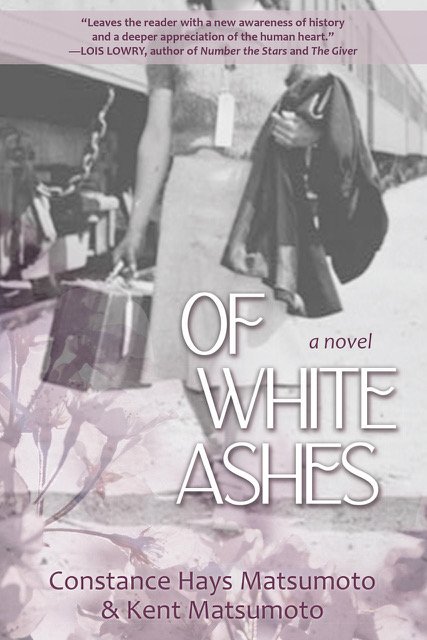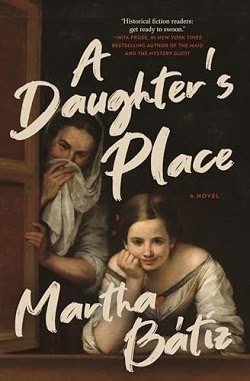INTERVIEW BY J. K. KNAUSS
Inspired by Shakespeare’s “What’s past is prologue,” Constance Hays Matsumoto writes stories and poetry intended to influence positive change in our world. Connie earned her B.A. from Notre Dame of Maryland University and M.S. in Business from Johns Hopkins University. She is a member of the Authors Guild, Eastern Shore Writers’ Association, Historical Novel Society, and Women’s National Book Association, and served on the Board of Directors of the Maryland Writers’ Association as Communications Chair and as President of the Baltimore Chapter and as an Advisory Council Member and Chair of the Working Group on Nuclear Issues for the International Center for MultiGenerational Legacies of Trauma. Of White Ashes (Loyola University MD May 2023) is her debut novel.
How would you describe this book and its themes in a couple of sentences?
Uprooted from an idyllic childhood in Hawaii, a Japanese American girl’s World War II internment threatens the promise of her American dream. Later, when she falls in love with a Hiroshima bomb survivor, differing worldviews imperil their unique love story. Their experiences compel us to reflect on the resilience of humanity and the risk of history repeating.

Indeed, there was a specific moment—on my first date with Kent Matsumoto. Kent had invited me to visit the Dale Chihuly glassworks exhibit at the Baltimore Museum of Art. Naturally, I was excited to see the exhibit and for the opportunity to know Kent better. We were greeted at the museum by a Dorothea Lange precursor exhibit, and I was instantly stirred by her sensitive and provocative photographs of destitution and hardship.
While quietly absorbing a photograph of Japanese American children wearing their best clothes and waiting for a bus to transport them into confinement following the bombing of Pearl Harbor, Kent whispered, “This photograph captures my mother’s story.” The enormous scale and vibrancy of the Chihuly exhibit paled in contrast to Lange’s small black-and-white photograph.
Later over lunch, Kent shared his father’s story. Born in California, his father moved to Hiroshima, Japan, when he was a baby. He was sixteen years old when the United States dropped the atomic bomb on his city. Miraculously, he survived. Feelings of terror, injustice, and inadequacy stirred inside me, trying to imagine the unimaginable.
I knew on that first date that Kent’s parents’ stories were remarkable, and a book was waiting to be written. What I didn’t know was that Kent and I would write the book together.
What kind of research did you do for this novel?
Of White Ashes is a dual point-of-view novel, moving between the distinctly different experiences of characters inspired by Kent’s parents. My father-in-law, Hisao Matsumoto, was a Japanese American hibakusha (atomic bomb survivor). Writing his story required deep research into World War II, the political environment in the U.S. and Japan from the early 1900s to 1949, daily life in wartime Japan, Japanese thought and culture, atomic bomb science and history, and the atomic bombings and their aftermath on Hiroshima and later Nagasaki. It also required great courage to portray the humanity and atrocities of atomic warfare with sensitivity and brutal honesty.
Why is it important to remember this time in history?
August 6, 2025 marks the 80th anniversary of the bombing of Hiroshima, Japan, when the U.S. unleashed unimaginable death and destruction by employing the world’s first atomic bomb.
Our world is fragile. Our country is divided. Today, the Doomsday Clock is at 89 seconds to midnight, with midnight referencing doomsday—a world-destroying catastrophe. We are now closer to midnight than at any point since the Bulletin of Atomic Scientists developed the design in 1947.
Along with fearing nuclear destruction, good things happen in our world. The 2024 Nobel Peace Prize was awarded to the Japanese Organization Nihon Hidankyo for its efforts to advocate for the elimination of nuclear weapons through witness testimony of hibakusha.
Two sculptures stand in front of the National Archives in Washington, D.C. One is of an old man gazing down the corridors of time. He holds a closed book representing history. The inscription, a paraphrase of Confucius, reads: “Study the Past.” The other is of a youthful woman gazing in contemplation of things to come. She holds an open book symbolizing what has yet to be written. “What is Past is Prologue,” from Shakespeare’s Tempest, is written on the base. The contemporary meaning of these statues is that history repeats. But does it have to? Absolutely not. Each one of us has the power to change our present and, hopefully, the course of history.
We must each do our part to focus on what unites, rather than divides, believing—as the Japanese inscribed on the marker at the Hiroshima Peace Memorial Museum: “Rest in Peace. This era will not be repeated.” Eighty years is a milestone anniversary. Listen. The clock is ticking.
How does Of White Ashes humanize these enormous, catastrophic events?
Imagine standing in a garden of blooming sunflowers on a beautiful sunlit day. You’re blinded by piercing light and everything goes dark. Later, you regain consciousness alongside a scorched and empty field. Much later, you learn the explosion was an atomic bomb that took the lives of tens of thousands of innocent people. Of White Ashes places readers in this metaphorical sunflower patch.
May the insightful wisdom of the sages, the long overdue prize to Nihon Hidankyo, and literary works like Of White Ashes help people imagine history repeating and what it might feel like to survive a atomic bombing. And in doing so, form a deeper understanding of the profound fragility of humanity.
 What is the best writing advice you have to share?
What is the best writing advice you have to share?
Learn early that the craft of writing and the business of publishing are two entirely different animals. New writers serious about publishing their books should consider investing a significant amount of time engaging in literary citizenship and learning the publishing industry while still writing. Don’t wait until the manuscript is finished! I’ve met many authors who found themselves alone, uninformed, misinformed, and often having overestimated their expectations of agents and publishers. Develop a presence and relationships with writerly friends sooner rather than later to strengthen your industry learning and build connections.
How? Carve out time each week to attend a critique group, writer association meeting, library event, or writers’ conference—it’s in these places that we develop genuine relationships with other writers, book lovers, and industry professionals. If in-person events are difficult, attend online. At a minimum, develop a social media presence and join literary group pages. The concept is a bit counter-intuitive, but it’s simple: get the help you need by giving more than you get.
What is the last great book you read?
Horse by Geraldine Brooks.
HNS Sponsored Author Interviews are paid for by authors or their publishers. Interviews are commissioned by HNS.
![]()



